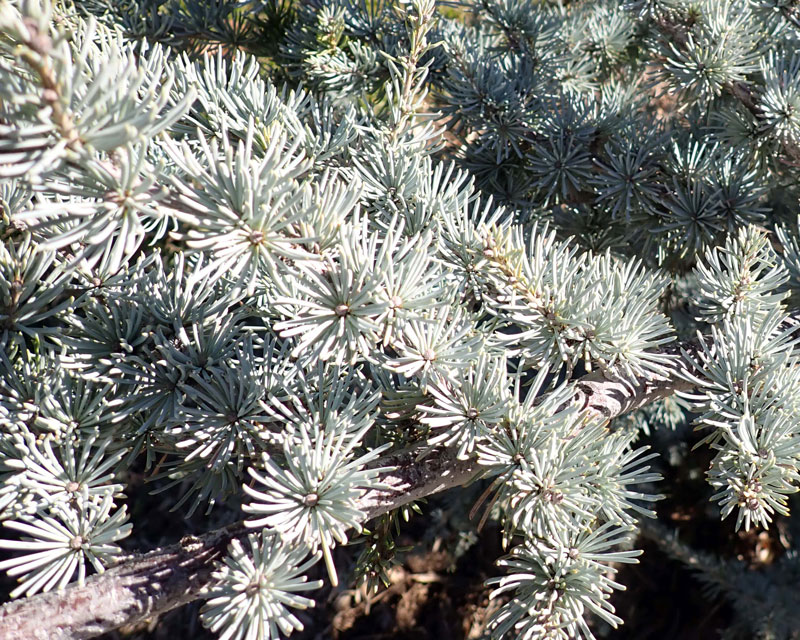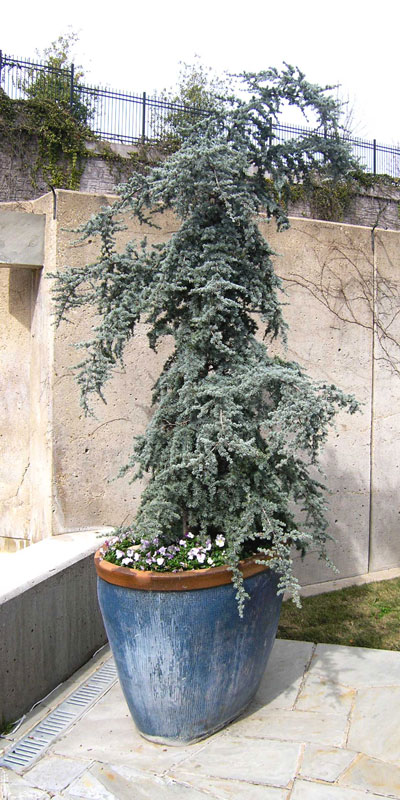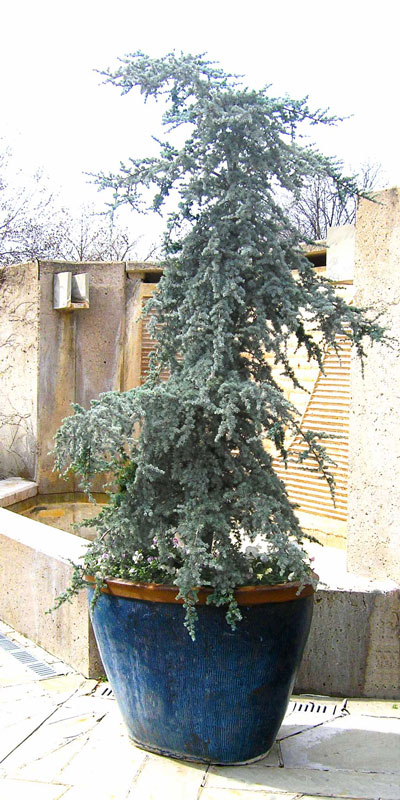‘Horstmann’ Blue Atlas Cedar – by Steve Huddleston
Blue Atlas cedars have been used in Texas landscapes for several decades. They’re large trees that can mature at 40 to 60 ft. tall.
‘Horstmann’, however, is a slow-growing, semi-dwarf cultivar that matures at 12 ft. tall and 8 ft. wide, perfect for smaller landscapes.
It has an irregular growth habit with horizontally tiered branches and highly ornamental, silvery-blue needles that hold their color well throughout the winter.

Its fine texture sets this tree apart from other landscape plants, most of which have coarser foliage, making it a perfect candidate for textural contrast and landscaping interest year ‘round.
‘Horstmann’ makes a perfect accent plant when used alone or in groupings. It functions well when planted at the corner of a house or in a row of three (or any odd number) along a drive or as a backdrop in a long bed featuring shrubs, perennials, ornamental grasses and annuals. Its small size and slow growth rate make it ideal as a container specimen for the patio or near an entryway. Use it in rock gardens, conifer gardens, blue-themed gardens, wildlife plantings or xeriscape areas.

Here’s what you’ll want to know…
• Common name: ‘Horstmann Blue Atlas Cedar
• Scientific name: Cedrus atlantica ‘Horstmann’
• Native home of the species: Atlas Mountains of North and Central Morocco to North Algeria
• Hardiness Zones: Zones 6-9 (includes all parts of Texas)
• Cultivar ‘Horstmann’ was introduced by Horstmann Nurseries in Germany
• Grows best in full sun


‘Horstmann” Blue Atlas cedars make outstanding container specimens because of their tolerance of sun, moisture extremes and Texas temperatures.
• Any well-draining soil – intolerant of standing water
• Does well in soils pH of 5.5-8.0 (acidic to alkaline)
• Average water needs while young, drought-tolerant when established
• Water by hand to ensure deep soakings
• Grows slowly, only 6 to 8 in. per year
• Little pruning is needed except to remove unwanted branches
• Reportedly good resistance to deer
• Benefits from being planted in a somewhat protected location
